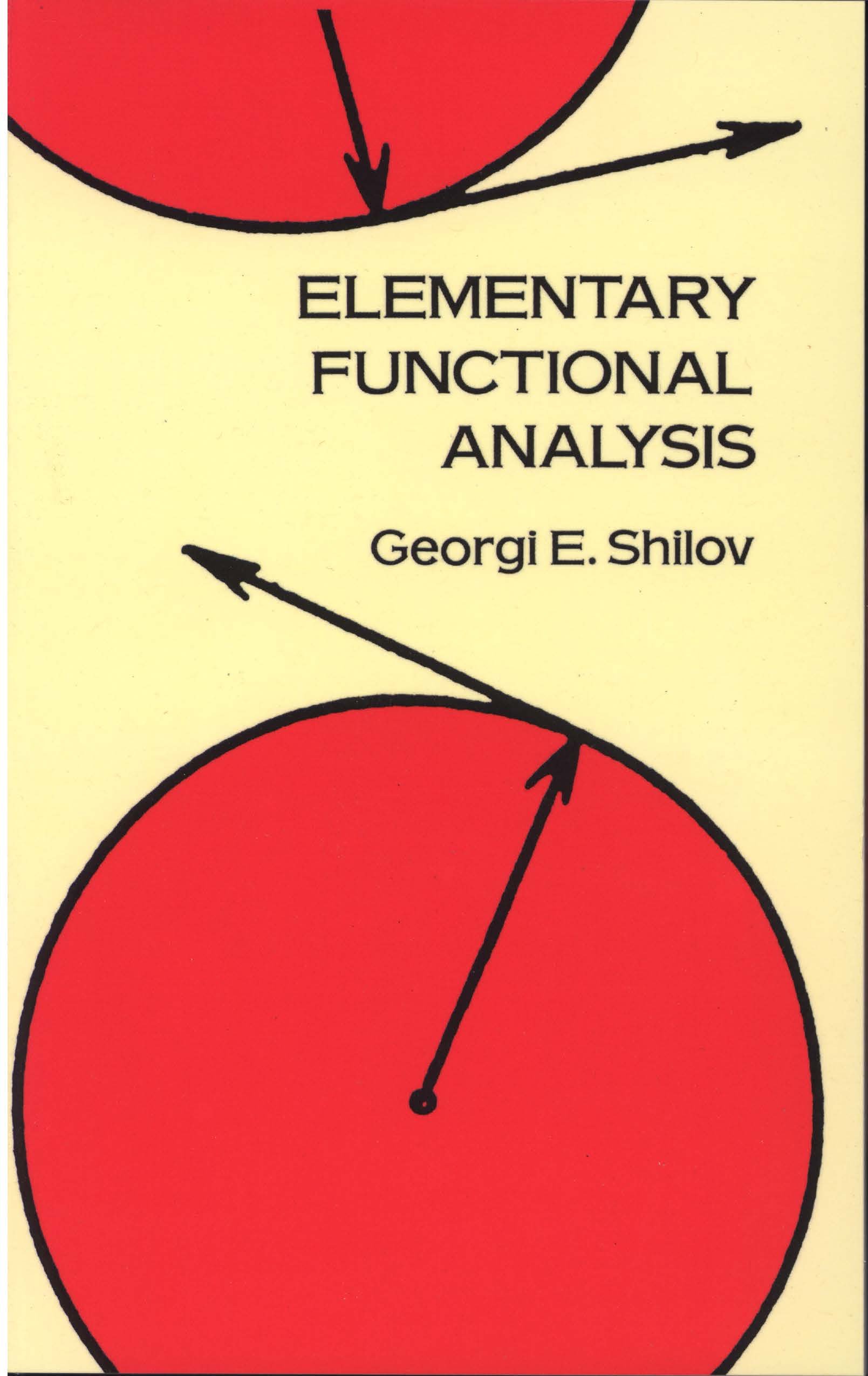Customer Services
Copyright © 2025 Desertcart Holdings Limited
Desert Online General Trading LLC
Dubai, United Arab Emirates


Elementary Functional Analysis (Dover Books on Mathematics)
P**N
A beginning course in functional analysis
Elementary Functional Analysis by Georgi E. Shilov is suitable for a beginning course in functional analysis and some of its applications, e.g., to Fourier series, to harmonic analysis, to partial differential equations (PDEs), to Sobolev spaces, and it is a good supplement and complement to two other popular books in the subject, one by Rudin, and another by Edwards. Rudin's book is entitled "Functional Analysis" (not in the Dover series) and it is my favorite. Rudin's book is of newer vintage, and it goes more in depth, and includes new material on unbounded operators in Hilbert space. Edwards' book "Functional Analysis: Theory and Applications;" is in the Dover series, and it is twice as thick as Shilov's book.Topics covered in Shilov: Function spaces, L^p-spaces, Hilbert spaces, and linear operators; the standard Banach, and Hahn-Banach theorems. It includes many exercises and examples. Well motivated with applications.Book Comparison:Shilov book is gentler on students, and it is probably easier to get started with: It stresses motivation a bit more, the exercises are easier, and finally Shilov includes a few applications; fashionable these days. And of course, the books in the Dover series are cheap in comparison. Review by Palle Jorgensen, August 2007.
E**Y
Too many references
Author refers to himself a lot, with references to this volume and to a previous volume. If you enjoy searching for section 5.4.3.2 (formula 7) to understand what he's saying in the current context, then this book is for you. Background acquired elsewehere? No problem. If you don't have his Volume I, be sure to buy that too because without it you won't make all the connections. By analogy, this is written like a web application that has many hyperlink references, some of them to pages that are not accessible. Unlike a web app, you are the search engine.
J**Y
another great book from Shilov
This is volume 2 of Shilov's Moscow University course on Mathematical Analysis. If you have read Shilov's first volume ("Elementary Real and Complex Analysis") or his volume on Linear Algebra, then you can expect more of the same clear explanation and thoughtful organization of materials. His proofs are designed to help the reader understand material and provide deep insight into the mathematics involved. Highly recommended for those who want a consise -- but very thorough -- introduction to theory behind differential equations and Fourier analysis.
D**I
wonderful
I am not a Mathematician but only a PhD in Logic and Epistemology. Notwithstanding I found this book well written. The proof are intuitive and the style is 'smooth', soft; very understandable. I have not yet read the first volume and his book on linear algebra, but I studied these arguments so, I understood the references to concepts of real analysis (for example). I am regretting that Dover changed the title. With the actual title, it seem a self-contained book. But it is not so. I preferred the original title: Mathematical Analysis 1 and 2.
R**O
The book is very good but it is not self contained
I enjoyed the last chapters of the book, that are relative to the applications: differential geometry, Fourier series, Fourier transform, differential equations.Also I think that the study of the convergence of Fourier series partially based on the notion of delta-like sequences of functions is very interesting and possibly it enables some generalizations.However the book is not self-contained because it does very much references to 'Linear Algebra' and 'Elementary Real and Complex Analysis' of the author.
S**G
Excellent book
This book is well organized, concise, and easy to read. Overall a very good deal.
R**E
物理数学の教科書のような少々変った函数解析入門
本書は二巻からなるMathematical Analysisの第二巻である。題名は函数解析学なのだが、それにふさわしいのは第一章のみで、続く章では、微分方程式、空間曲線、直交函数系、Fourier変換が議論される。物理学科の方なら、これらの章題から物理数学の教科書と思われるだろう。しかしあくまでも題材は数学書としてのものであって物理数学とは関係が希薄、厳密な記述になっている。本書では著者のLinear Algebraと第一巻のElementary Real and Complex Analysisがひんぱんに引用されており、それらを手元に置かれることをお勧めする。第一巻と同じく数式は左寄せになっているので頁の右側が白いのは慣れるまで違和感を持ってしまう。
Trustpilot
5 days ago
3 days ago